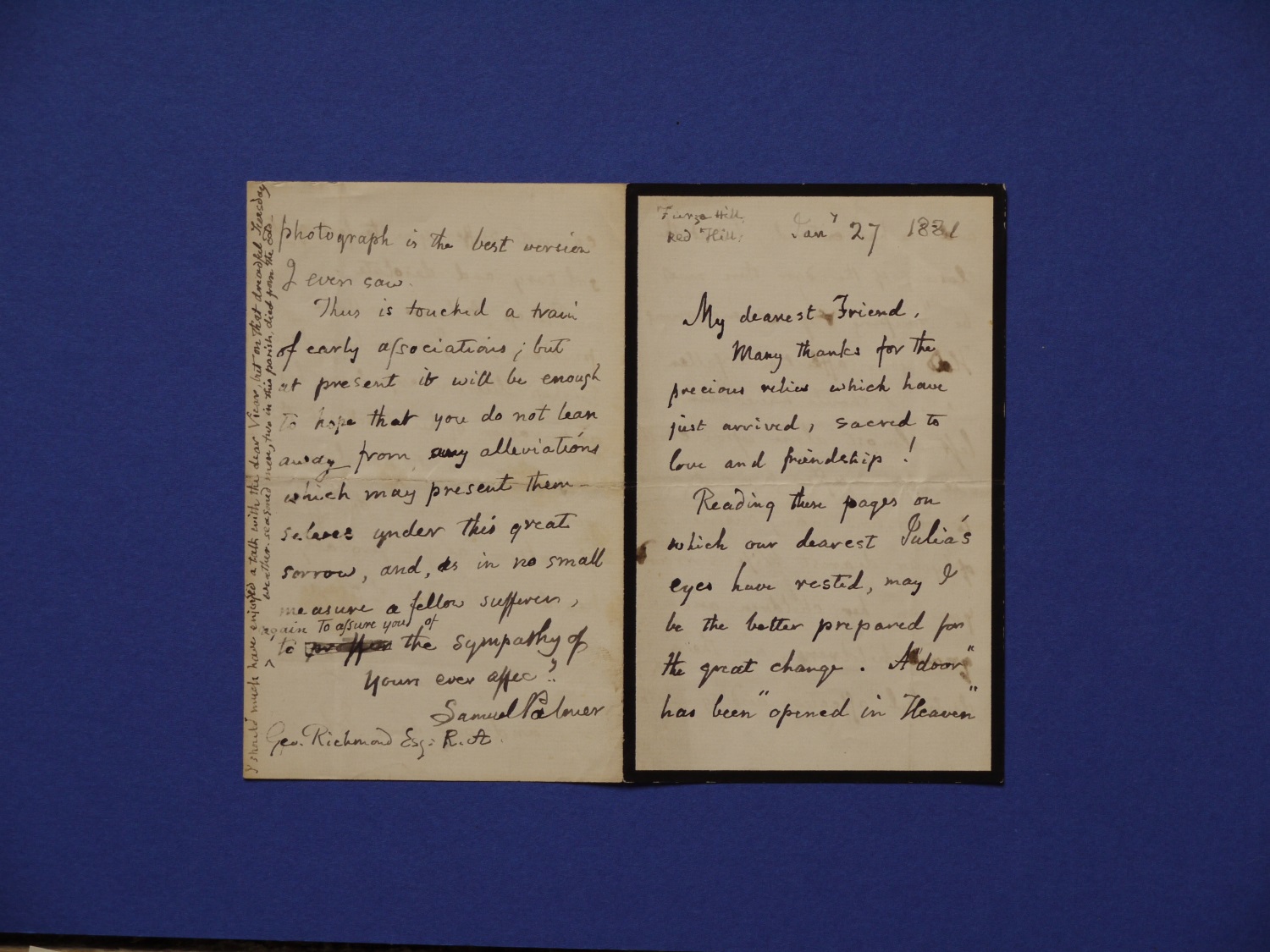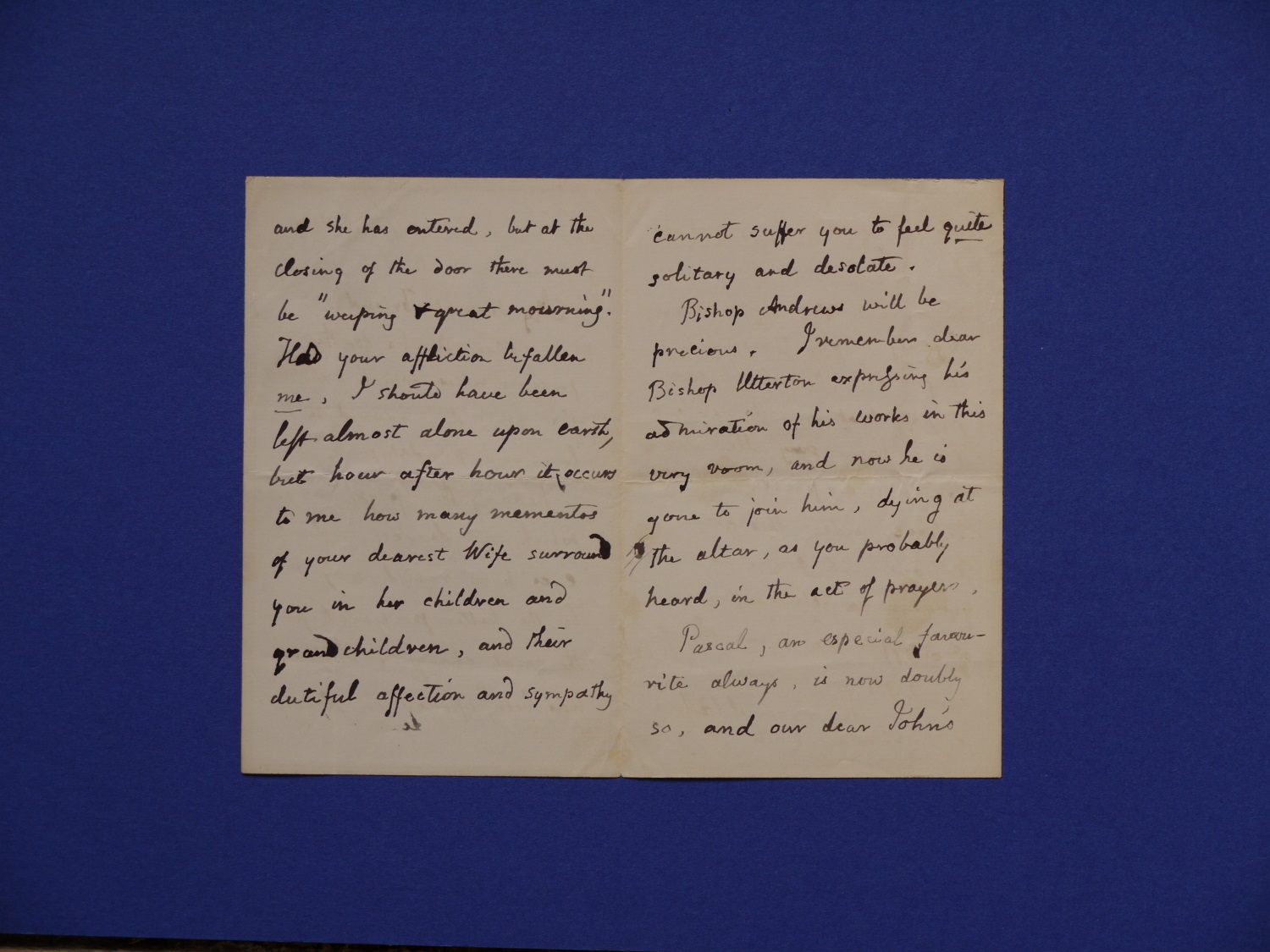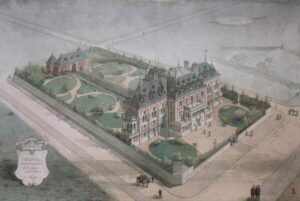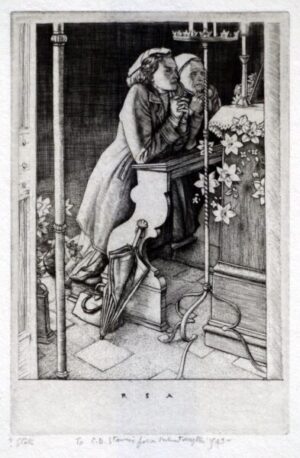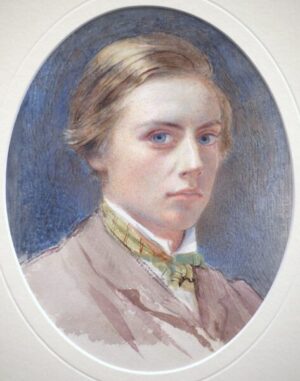Description
Content:
Furze Hill, Red Hill Jan 27/1881
My dearest Friend,
Many thanks for the precious relics which have just arrived, sacred to love and friendship! Reading these pages on which our dearest Julia’s eyes have rested, may I be the better prepared for the great change. A ‘door has been opened in Heaven’ and she has entered, but at the closing of the door there must be ‘weeping and great mourning’. Had your affliction befallen me I should have been left almost alone upon earth, but hour after hour it occurs to me how many moments of your dearest Wife surround you in her children and grandchildren, and their dutiful affection and sympathy cannot suffer you to feel quite solitary and desolate. Bishop Andrew’s will be precious. I remember dear Bishop Utterton expressing his admiration of his works in this very room, and now he is gone to join him, dying at the altar, as you probably heard, in the act of prayers. Pascal, an especial favourite always, is now doubly so, and our dear John’s photograph is the best version I ever saw. Thus is touched a train of early associations, but at present it will be enough to hope that you do not lean away from any alleviations which may present themselves under this great sorrow, and as in no small measure a fellow sufferer, again to assure you of the sympathy of,
Yours ever affectionately,
Samuel Palmer.
Geo. Richmond Esq., R.A.
I should much have enjoyed a talk with the dear Vicar but on that dreadful Tuesday weather-seasoned men, two in the Parish, died from the cold.
Brand
Palmer, Samuel (1805-1881)
Palmer became an artist at an early age, at 14 he had exhibited at the British Institution, sold a landscape and had three works hung in the Royal Academy. At 17 he met the artist John Linnell, later to become his father in-law, who guided and mentored him and introduced him to William Blake, who influenced his work throughout his life.
Palmer became the leader of a group of young artists called the 'Ancients', his good friend George Richmond was also a member. During the 1820s Palmer went to live in the Kent village of Shoreham, which he called ‘Valley of Vision’ and it was here, living together with fellow Ancients, that he produced some of his most celebrated romantic landscapes combining visionary imagery with a highly detailed study of nature. It was when he left Shoreham that he went on his travels to Wales and the Wye Valley and after marrying Hannah Linnell, to Italy. Palmer’s spirituality, his relationship and attitudes to rural life shaped his work.
His personal life was marred with tragedy and turmoil. He had 3 children with his wife, daughter of John Linnell, only one of which survived. Palmer was distraught after the death of his eldest son at 19, and never fully recovered, blaming himself for pushing his son too much. Palmer’s relationship with Linnell became strained due to their differences over religion and politics and resentment over his continued financial support.
Palmer received little critical attention during his lifetime but posthumously has been more widely recognised. His work featured in ‘Watercolour’, an exhibition at Tate Britain (Feb-Aug 2011).
